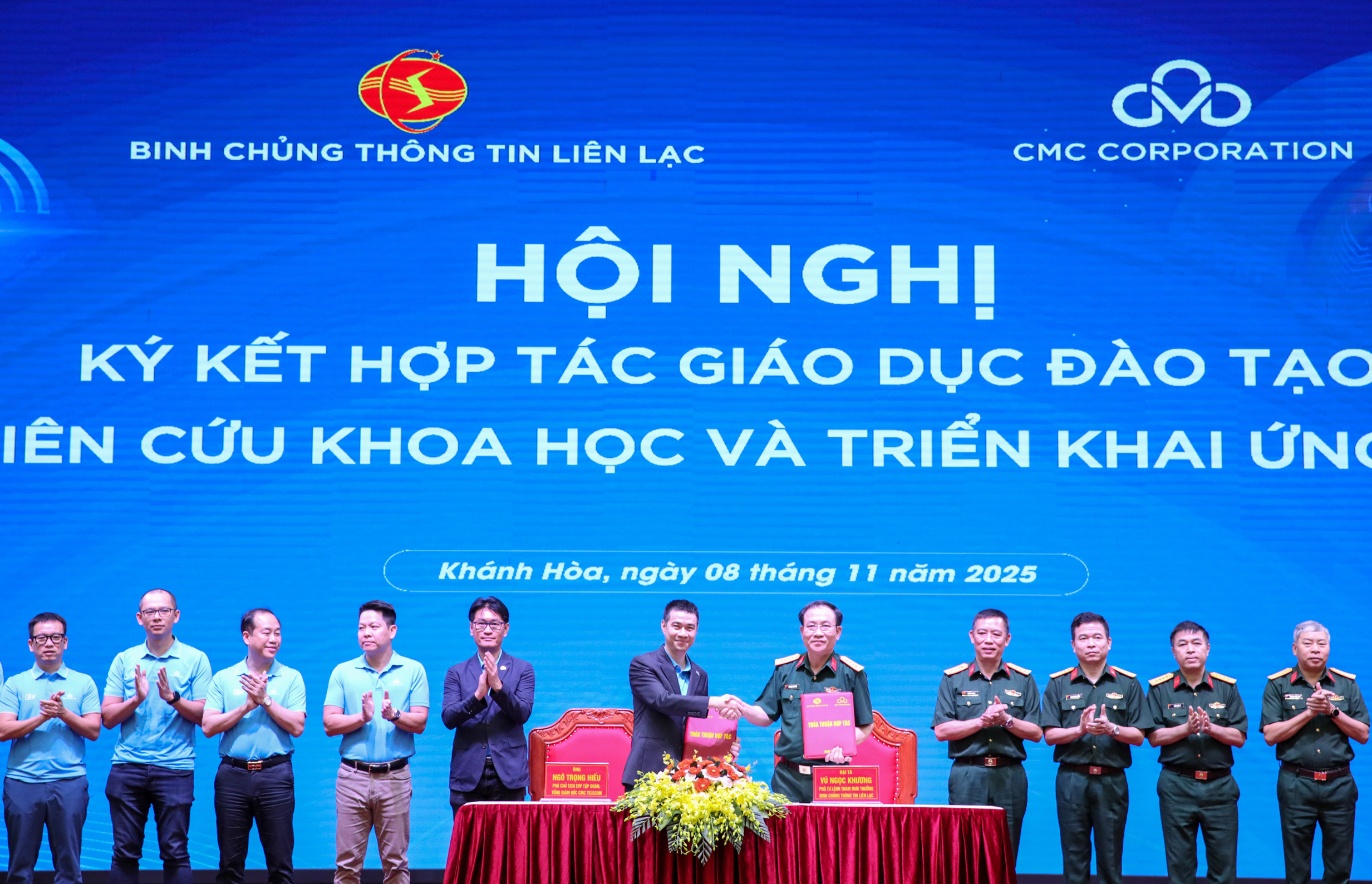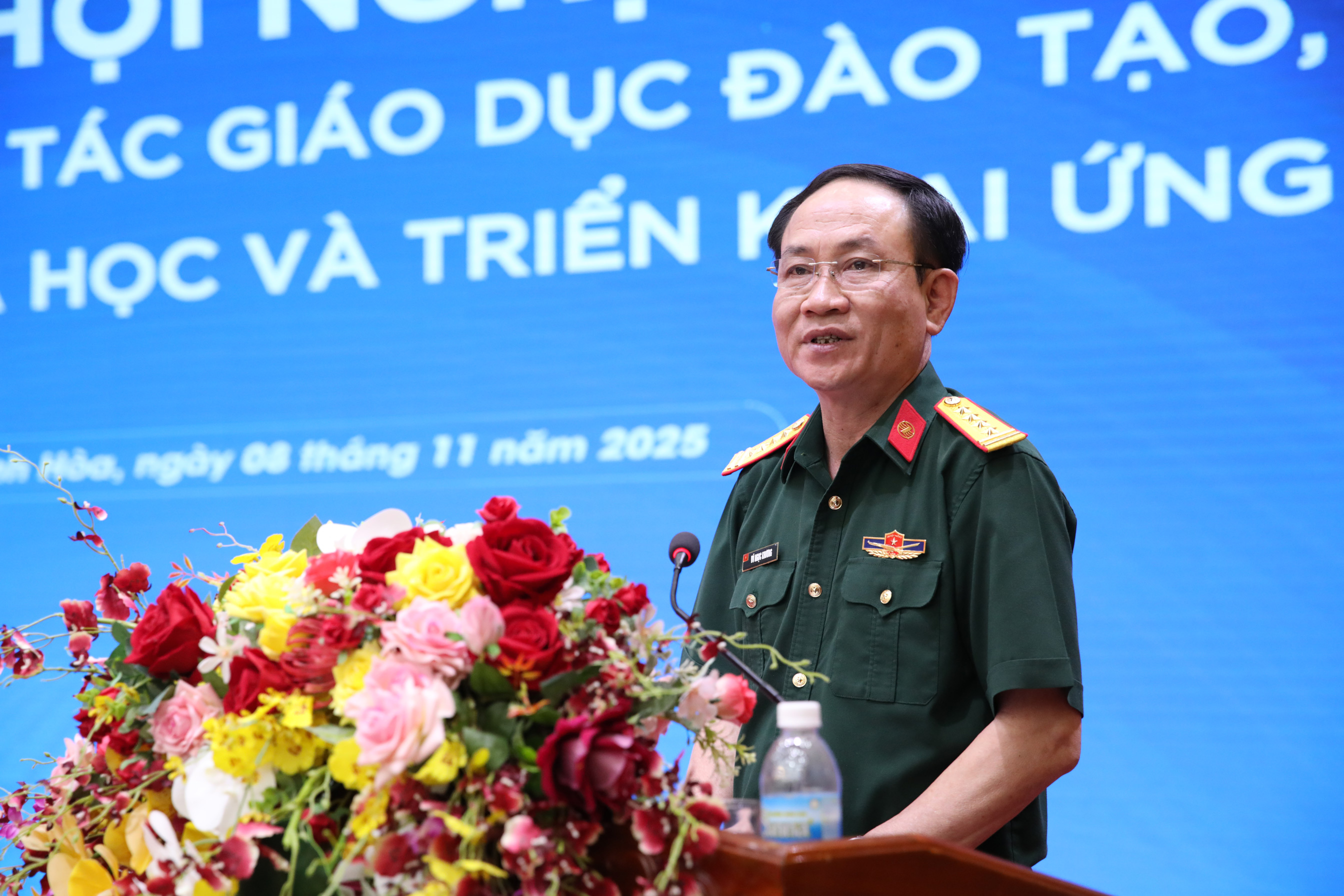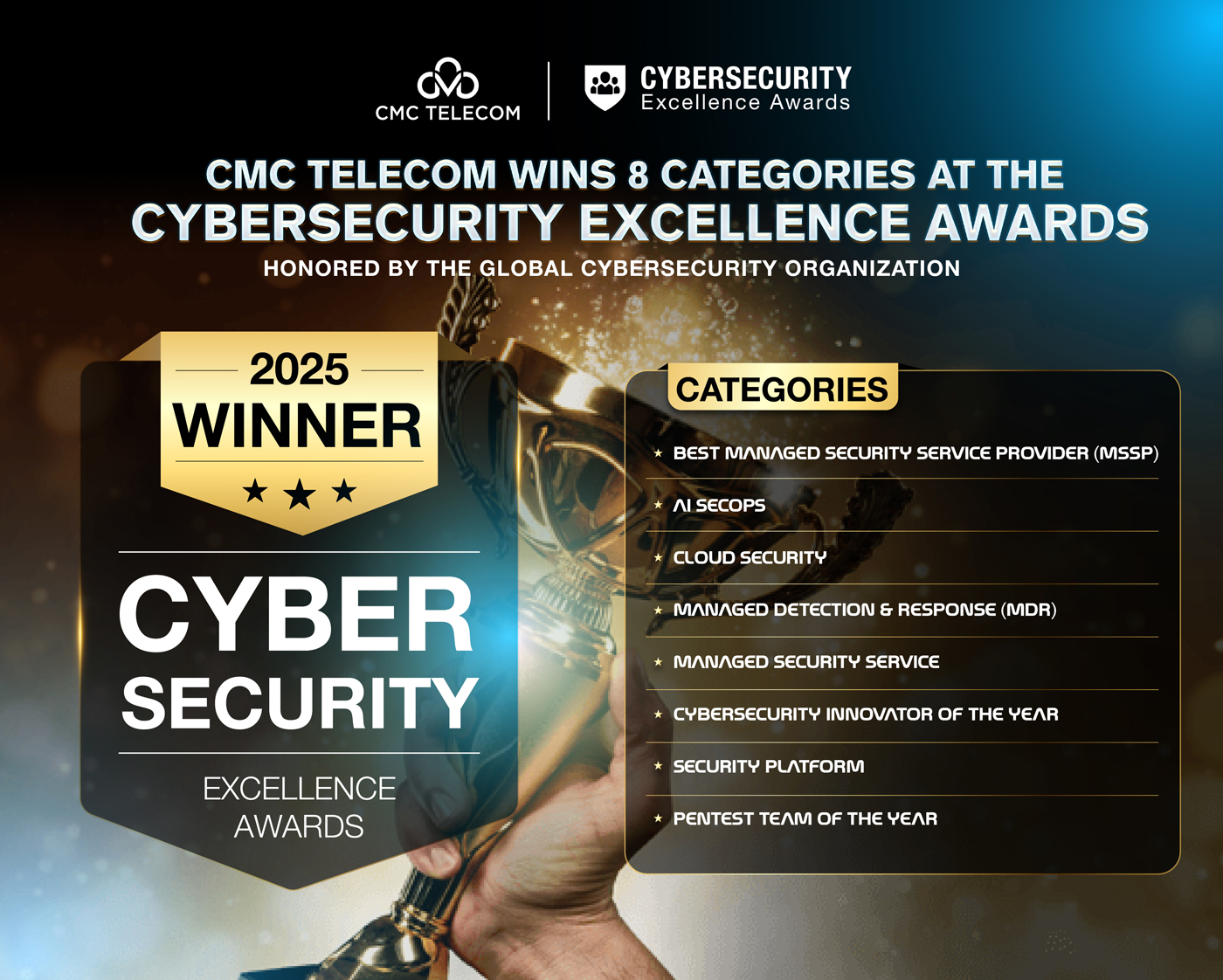CMC – SIGNAL CORPS ESTABLISH STRATEGIC COOPERATION: COMMITMENT, THREE PILLARS OF TALENT – R&D – INFRASTRUCTURE
Recently at the Signal Officer School (Khanh Hoa), CMC Corporation and the Signal Corps signed a strategic cooperation agreement on education–training, scientific research, and applied deployment.
The event marks a new phase in the relationship between an infrastructure–AI–cybersecurity technology enterprise and the core force that ensures military communications. The agreement was signed by Ngo Trong Hieu, Vice President (EVP) of the Group and CEO of CMC Telecom, and Colonel Vu Ngoc Khuong, Deputy Commander and Chief of Staff of the Signal Corps. CMC Chairman Nguyen Trung Chinh stressed the significance of cooperation in both professional expertise and operating discipline, with the requirement to be “measured by outcomes, not promises on paper.”
Three pillars, one shared objective
Under the agreement, cooperation is structured around three pillars: (1) training and human-capital development according to a digital competency framework aligned with international standards and mission needs; (2) scientific research and technology transfer focusing on AI–IoT, cloud computing, and cybersecurity; and (3) cooperation to develop telecommunications infrastructure, building on existing achievements and expanding in suitable areas. The shared approach is a closed “learn–do–validate” cycle that shortens the distance from the lab to real-world deployment.
 Photo 1: Panorama of the Signing Ceremony of the Strategic Cooperation Agreement between CMC & the Signal Corps.
Photo 1: Panorama of the Signing Ceremony of the Strategic Cooperation Agreement between CMC & the Signal Corps.
Unlike models that stop at principles, the agreement’s implementation mechanism stipulates a joint working group and quarterly checkpointing. Each component has clear output indicators: number of classes per year; technical–safety–security criteria; trial-operation milestones; and effectiveness indicators such as the rate of meeting output standards. The two sides also agreed on a 100-day program after the signing to finalize the 2026 training framework, complete the design of a Digital Lab/Cyber Range, and review the list of telecommunications-infrastructure cooperation items. The guiding philosophy: “do for real – measure for real – report for real.”
Speaking at the event, Colonel Vu Ngoc Khuong noted that past coordination had laid a good foundation, yet it is “not commensurate with the potential, strengths, and needs” of both sides in the context of building a modern Army. He proposed prioritizing intensive training courses; inviting enterprise experts to teach; establishing a joint research group on AI and cybersecurity; and building–operating a Digital Lab under strict security criteria so that results are “measurable and inspectable” against shared standards.
 Photo 2: Colonel Vu Ngoc Khuong, Deputy Commander and Chief of Staff of the Signal Corps, delivers remarks at the event.
Photo 2: Colonel Vu Ngoc Khuong, Deputy Commander and Chief of Staff of the Signal Corps, delivers remarks at the event.
Representing CMC, Ngo Trong Hieu affirmed that years of cooperation have built trust and practical coordination capacity. The new agreement moves the relationship into a measurable operating mode, focusing on people, R&D, and infrastructure. “CMC will bring our full capabilities in Cloud, AI, information security, and Data Centers into the program, while maintaining a disciplined–precise–speedy work style. For us, Commitment means milestones with clear accountability,” he said.
Acknowledging both sides’ viewpoints, Chairman Nguyen Trung Chinh emphasized effectiveness and long-term commitment: “CMC is in it for the long haul, prioritizing safety–security–effectiveness, and seeing things through. The agreement not only opens technical cooperation but also shapes an execution style for high-reliability projects.”
Training cooperation: internationally aligned, practice-oriented
Within the overarching agreement, the Signal Officer School and CMC University will co-develop training programs aligned with international standards and mission requirements; establish credit transfer and recognition mechanisms; update AI content in research and teaching; organize scheduled student and faculty exchanges; and expand internships—both enterprise and military semesters. The two sides will apply AI to training management and student experience (digital assistants, smart classrooms, learning-analytics), aiming for graduates to be “job-ready upon completion,” closing the gap between academia and workforce needs.
For R&D and transfer, the two parties will co-host a Digital Lab across three tracks—AI–IoT, Cloud, and Cybersecurity—alongside a cyber range for SOC exercises, Red Team/Blue Team drills, incident-response standardization, and skills validation. In telecommunications infrastructure, cooperation will build on existing items and expand data-center, cloud-computing, and cybersecurity solutions for communications systems and training institutions; all components will meet safety, security, and efficiency requirements.
The partnership centers on people: two-way rotations and internships; faculty and cadets joining real projects; enterprises opening technology spaces to the school, and in turn the school instilling “on-the-ground discipline” for technology-operations teams. The goal is to develop a “bilingual” workforce—strong in expertise and exemplary in discipline—able to meet stringent safety, security, and efficiency demands at scale.
 Photo 3: CMC Chairman Nguyen Trung Chinh and the Group’s leadership congratulate the Signal Officer School on its 74th founding anniversary (11/11/1951–11/11/2025).
Photo 3: CMC Chairman Nguyen Trung Chinh and the Group’s leadership congratulate the Signal Officer School on its 74th founding anniversary (11/11/1951–11/11/2025).
Three days of military discipline: concrete steps to operationalize comprehensive cooperation
Immediately after the signing, nearly 100 CMC senior leaders and managers spent almost three days following a military routine at the Signal Officer School: wake-up 05:00, physical training 05:30, breakfast 06:00; drills 07:00–11:00; lunch 11:30; drills 13:30–17:00; dinner 18:00; news reading 18:40; watch the evening news 19:00; night march and sentry duty 22:00 (from 23:00 to 06:00 the next morning)… This was not a performance but an agreed cooperation action: placing the enterprise’s technology-operations teams within the Army’s standards of discipline–order–compliance to internalize the organizational behaviors necessary for operating at international standards.
On behalf of the Strategic Conference Organizing Committee, Dang Tung Son, Group Vice President (SVP)/CSO, said that while it may not yet reflect a complete military life, the nearly 100 participants completed the training with seriousness, cohesion, and determination; the flame of discipline and order that was nurtured will help CMC advance strongly toward upcoming goals.









